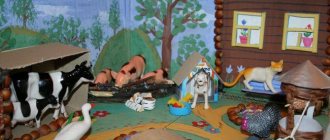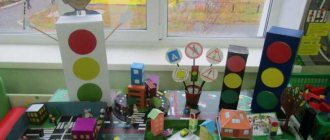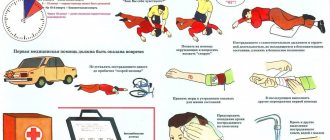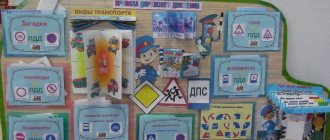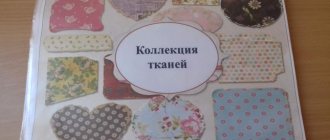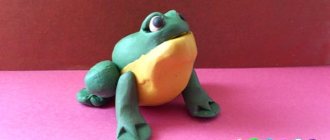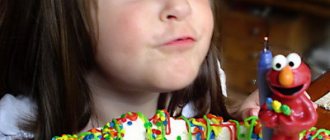Pictures of road signs
Clear drawings of signs with analogies will help you remember the most important symbols that you will encounter on your way to elementary school or kindergarten. Vivid images and simple explanations allow you to instantly attract attention and convey information quickly, cheerfully and clearly.
Thanks to road pictures, the child learns to be independent and make the right decisions. The main goal is to show that participation in traffic is not as scary as it may seem. If you understand the meaning of road signs, you can organize your own actions.
Road pictures are different for each age category. Children learn in the presence of an adult, who prompts actions and explains signs.
Pictures of traffic rules for children
This is a fun activity for different age groups, which at the same time brings great benefits. Every child, just starting to walk, becomes a participant in traffic - goes to kindergarten or school, walks in the yard, learns to ride a bicycle. Studying from strict books is boring and difficult, so as an alternative we offer bright drawings with clear messages.
The learning process attracts the child with its accessibility and diversity. Any adult can help understand the images by adding examples from personal experience to the drawing. As a result, confidence in himself and his actions in any situation is formed, he will not be confused or scared at the sight of a moving car and will know what to do at a pedestrian crossing. Traffic rules drawings are quick answers to children's questions.
Road alphabet in pictures
This is play-style learning. Vivid images are better remembered and attract children's attention better than dry texts and abstruse phrases. This alphabet has a dual function - visual teaching of literacy plus familiarization with road traffic and its participants. The child will easily remember the order of letters in the alphabet and their spelling, and will also know the designations of markings, signs, vehicles, etc.
The participation of an adult in the process of learning the alphabet can only be limited to testing the acquired knowledge. Colorful pictures and simple explanations are learned by children of different ages. As a result, the child is well oriented in traffic situations, learns in which places to cross the road, and will be able to distinguish between traffic lights and road sign designations.
Game layout according to traffic rules “City Street”
Game layout according to traffic rules “City Street”
Prepared by the teacher of MBDOU Kindergarten No. 40 in Shakhty
Bobrovskoy E.V.
Target:
formation of the foundations for safe behavior of children on the road; prevention of child road traffic injuries.
Tasks:
- introduce children to the rules of the road, the purpose and signals of traffic lights, road signs, and expand knowledge about the rules of safe behavior for children on the street;
- encourage children to engage in independent activities in the traffic rules corner;
- develop fine motor skills, visual perception, social and everyday orientation, spatial orientation;
- Enrich and expand children's vocabulary and horizons;
- Encourage children to engage in independent activities in the traffic rules corner.
The “City Street” layout is intended for learning traffic rules for children from 3 to 6 years old (with the complication of this manual taking into account the age characteristics of children: adding traffic signs, parking, stops, buildings, etc.). The layout comes with small objects for playing with (cars, road signs, figurines of people, animals, etc.). Children really like games with layouts. They contribute to their development, increase the level of curiosity, expand and consolidate knowledge about traffic rules and rules of conduct on the street, in public transport, and allow them to use acquired knowledge and observations in the game, filling children with new impressions.
Playing with the “City Street” layout promotes the development of communicative communication: children interact both with adults and with each other during the game, learn to negotiate, avoid conflicts, and coordinate their actions, first with the help of a teacher, and then independently.
Also, using the layout, you can solve a number of problems on speech development: during the game and N.O. D. children ask and answer questions; learn to act according to verbal instructions; describe, compare, reason, thereby expanding their vocabulary, developing fine motor skills, etc.
In the process of preparing for the game, as well as during the game itself, artistic expression and (or) musical accompaniment are used, which serve to develop auditory perception, as well as create a positive emotional background. While playing with the model, the child creates an imaginary situation using his knowledge and accumulated experience. Growing up, the child can reflect his impressions in productive activities.
Working with this layout develops cognitive interests: concepts such as space, quantity, size, color are reinforced; children become familiar with traffic rules and road signs; learn to distinguish between types of transport and their purpose; an idea of the variety of buildings and their functions is formed, etc.
Non-existent road signs
This is a great conceptual way to develop a child's understanding of the world. Based on simple drawings, the child develops logical thinking, associative perception, and adapts to social life. Road traffic is an integral part of modernity, vehicles and pedestrians intersect everywhere. Understanding the basics of traffic rules means being safe.
Pictures with non-existent road signs are beneficial because they develop in the child an idea of real symbols that need to be followed. At the same time, fantasy develops thanks to imaginary objects. Children easily reproduce or invent new colorful images. This learning process is built in a game format and is preparatory to further study of the signs from the Rules.
Do-it-yourself traffic rules layout for kindergarten with photo
Didactic manual on traffic rules for preschoolers
Author: Khamidullina Aigul Suleymanovna, teacher at MBDOU kindergarten No. 3, village. Kandra "Preschool educational institution s. Bishkuraevo", Republic of Belarus Tuymazinsky district. Description: This master class is for preschool teachers. Purpose: The layout will be useful to educators during safety classes in preschool educational institutions. Goal: Making a model according to traffic rules for the kindergarten "Gorodok" Task: To train teachers in the step-by-step production of a model from waste material with their own hands.
Master class with step-by-step photos. "Layout according to traffic rules"
For work we will need the following materials and tools: - boxes of different sizes (for tea, toothpaste, cookies, cream, etc.); - self-adhesive paper of different colors (the advantage of this paper is that when dust settles, you can easily and quickly remove it with a damp cloth); - scissors; - a simple pencil; - black marker; - Double-sided tape; - cardboard (old boxes) - cardboard, plastic bottle caps, ice cream sticks (for making traffic signs)
Progress:
1. We make the base of the layout using any large-sized cardboard (I used a TV box) and self-adhesive paper: blue (sky), gray (asphalt), green (grass), white (clouds, zebra), multi-colored (flowers) and so on further at your discretion.
2. Making houses and buildings in our town: we cover boxes (of different sizes) with this paper, each building has its own color as desired (hospital, pharmacy, houses, train station, kindergarten, school, and so on). Then we cut out squares (rectangles) from colored paper and glue the windows and doors onto the houses, make inscriptions as desired (you don’t have to) Draw frames on the windows using a black marker.
3. We place houses and buildings on the base if desired (you can put them on double-sided tape so they don’t fall).
4. We supplement the layout with ready-made parts: houses (imitation of country houses), trees (made from Lego)
5. We continue to supplement the layout with the main details: transport, road signs. If you don’t have any ready-made ones, you can make them yourself from cardboard and lids: The layout is ready. Thank you for your attention! I will be very glad if my idea is useful!
We recommend watching:
Entertainment according to traffic rules in the middle group of kindergarten. Scenario Scenario of entertainment according to traffic rules for children of primary preschool age Scenario of entertainment according to traffic rules for children of the 1st junior group Summary of a lesson on traffic rules in kindergarten
Similar articles:
Lesson notes for junior group 1. Traffic Laws
Traffic rules holiday in the preparatory group
Traffic rules in kindergarten. Senior – preparatory group
Lesson notes on traffic rules for the senior group. Signs in a person's life
Lesson notes on traffic rules for the senior group. Why are road signs needed?
